Why Is My Dryer Not Drying? 9 Likely Reasons
-
Pete Ortiz
- Last updated:
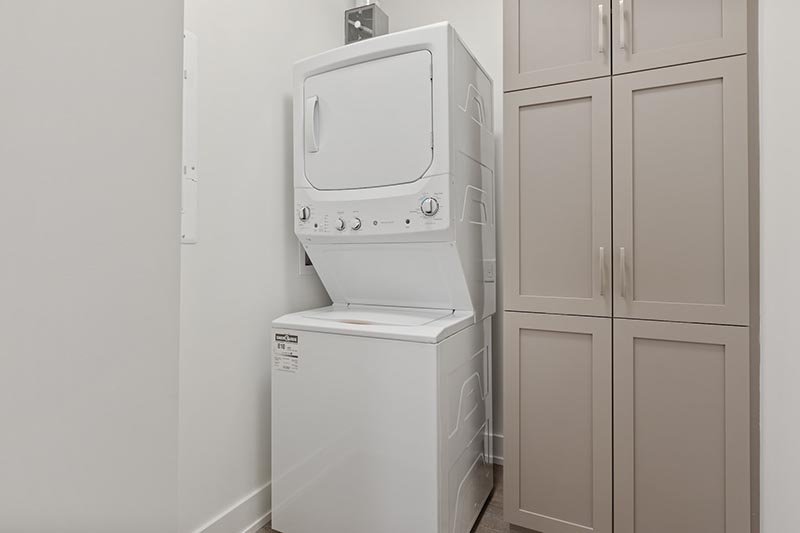
A dryer less than ten years old should turn on, tumble, heat, and dry your wet laundry efficiently. Moreover, it should not take ages to dry a load of clothes. Something is undoubtedly amiss if you are taking damp clothes from your machine.
There are various potential reasons why your dryer could be inefficient. Some of these have quick fixes making it unnecessary to replace the appliance or seek expert repairs.
Before you make a mountain out of a molehill and blame the concern on complex issues that warrant buying a new dryer, consider these common problems. We will also share simple guides on how to fix and restore your dryer’s efficiency.
The 9 Reasons Why Your Dryer is Not Drying
1. The Dryer Settings
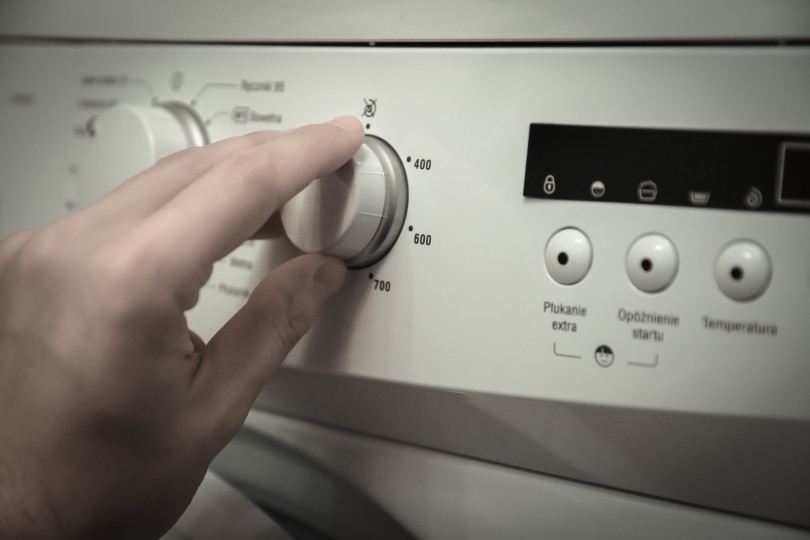
One of the basic steps to take if your dryer is not drying your laundry is to check the control panel. Ensure you reset the timer and temperature levels before hitting the start button to start a cycle. Let the cycle run for 5 to 10 minutes, and open the dryer door to check whether your laundry feels warm to the touch.
If the clothes are as wet and cold as they were before turning on the dryer, it is possible that the control panel has malfunctioned and needs to be replaced. Replacement requires expert services, making it crucial to consider other potential concerns before you call a technician.
2. Overloaded Dryer

Your dryer can only handle as much laundry load per cycle. Overloading it is another potential cause of inefficient drying. When the machine is overloaded, it has no space for the hot air to circulate and dry the clothes. Also, the excess weight limits tumbling, meaning your laundry will be damp after a cycle.
You can make your dryer function more efficiently by ensuring it’s only 2/3 full. Check your manual to know the recommended load weight for your appliance to address any concerns with its performance. While it can be tempting to dry a heap of laundry in one cycle, overloading your dryer can also damage its internal components.
3. Power Issues
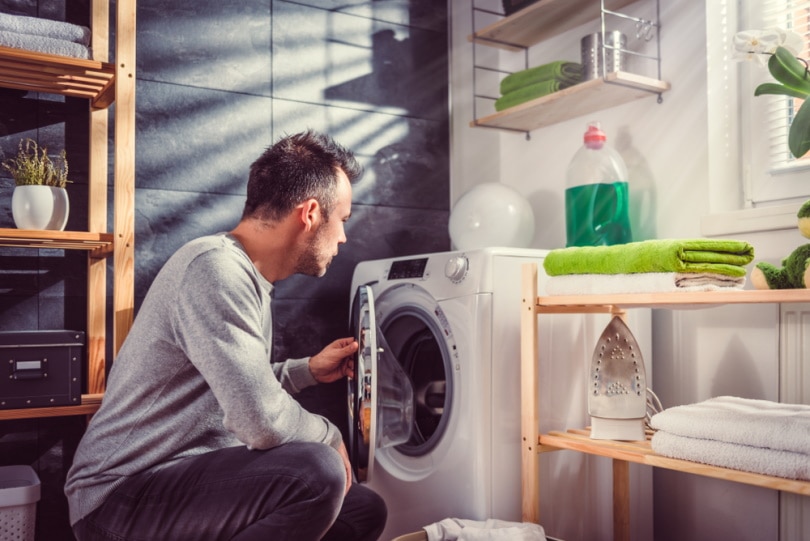
If your dryer is disconnected from power entirely, the motor will not engage, the control panel will not light up, and the tumbler will not spin. You should check the power cord if you have an electric appliance and ensure it is secure on the power outlet.
Also, check the two circuit breakers dedicated to the dryer. Turn them off, then on, and test your dryer to see whether it will heat your clothes.
If you are using a gas-powered dryer, inspect the gas valve located behind the dryer. Begin by ensuring the gas line is straight enough to allow proper gas flow. It is always best to hire an expert to help straighten a kinked gas line. Also, inspect the knob to ensure it is not perpendicular to the gas line. If it is, turn the valve to set the knob parallel to the gas line and allow gas to flow.
4. Clogged Lint Screen

It would be best to clean your lint screen routinely because clothes shed fine pieces of fabric fiber during each cycle.
Some clothes shed more lint than others, and the recommended frequency of cleaning the lint screen will depend on your household needs. Generally, your machine may take longer to dry clothes if the lint screen is full. A dirty lint trap prevents the hot air circulation required to dry your clothes efficiently.
Cleaning the lint screen is easy and should not take more than a few minutes. Use your fingers or a nylon brush to remove the lint and clean the screen with warm, soapy water. Make sure you touch both sides of the screen and rinse with warm water. Dry the area with a clean, soft towel and test your dryer to see if the issue is resolved.
5. Bent Vent Hose

Dryer vents made from flexible plastic or metal foil are prone to getting kinked or crushed. Such concerns can restrict airflow and hinder your dryer from functioning optimally.
Often, a bent vent is better addressed by replacing the hose. Consider varieties made from rigid plastic or metal.
6. Clogged Dryer Vent
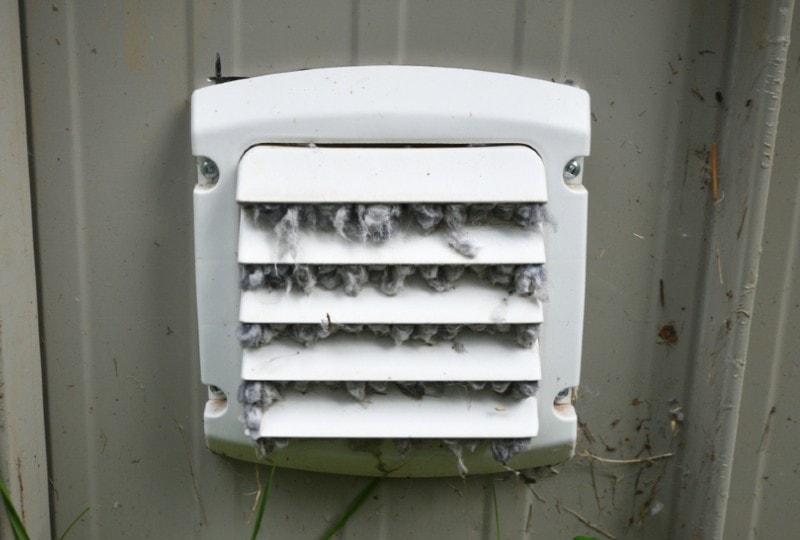
Another possible reason your dryer is not drying your clothes is the lint buildup in the vent. Accumulated lint in the exhaust vent is a common problem you should look out for, especially if it’s been over a year since you cleaned your dryer vent. If it has lint, dirt, or debris, clean it to allow proper airflow and reduce the risk of a house fire.
Lint is highly flammable and can pose a fire hazard, especially if your dryer is heating up more than usual. There are a few simple steps involved in cleaning the dryer vent.
- Disconnect the ductwork and exterior exhaust hood
- Vacuum the vent from your laundry room and outside
- Use a lint brush to clear out buildup within the vent
- Reconnect the vent hose and turn on your dryer
7. Lack of Proper Ventilation
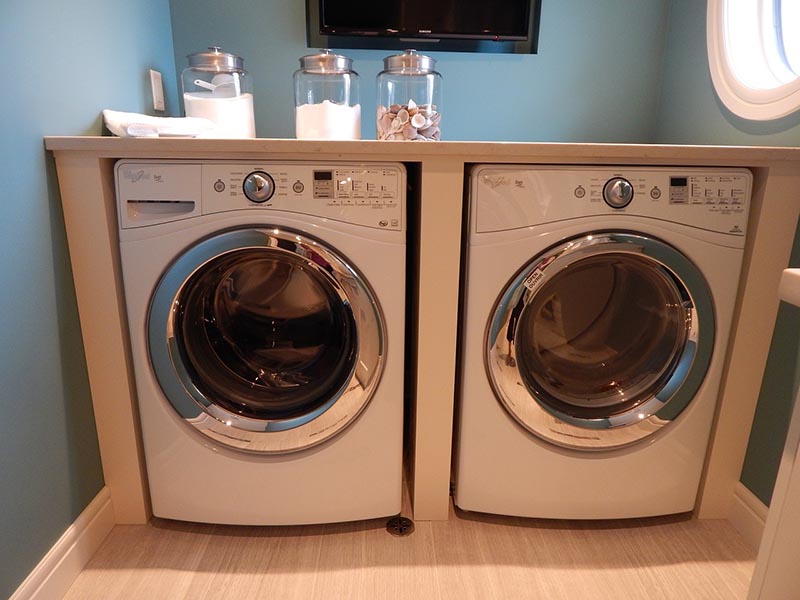
If your dryer is in a closet, ensure it has adequate space to allow air circulation. Make sure the closet door has ventilation openings at the top and bottom. Furthermore, the appliance should have one inch of airspace on both sides, at least three inches at the front and four inches at the rear.
If you suspect your dry is not drying laundry efficiently because it is in a tight space, check your manual to confirm the recommended installation instructions. Make sure you move the appliance and place it on a site that matches the recommended space and ventilation requirements.
8. A Blown Thermal Fuse

If the drum spins when you load your laundry, but there’s no heat, even with high heat settings, you likely have a blown thermal fuse. The work of the thermal fuse is to prevent fires, meaning that if it shorts, the heating mechanism won’t function. Also, there’s likely another reason for the shortage, such as a clogged lint screen, laundry overload, or clogged vent.
Your dryer’s fuse is close to the exhaust duct, and you can replace it without hiring an expert. Turn off the power and use a screwdriver to remove the fuse from the back panel. Check the model of your old fuse and shop at your local hardware for a replacement.
9. A Worn Out Drive Belt

Sometimes, a dryer may seem functional because of the motor hum. However, the drum might not spin, and the appliance might hardly dry your clothes. If your machine is showing these symptoms, a worn-out drive belt likely is to blame.
To inspect the state of the drive belt, unplug your dryer from the power outlet and remove the rear panel. Remove the drive belt and check it for signs of wear and tear. If you need a replacement, get one for your specific dryer model.
Final Thoughts
We hope the above troubleshooting tips help you identify and fix the problem with your dryer. While our list is not exhaustive, it covers all the common concerns that can cause inefficient drying. If nothing seems to work and you cannot blame the drop in performance on your machine’s age, it may be time to seek professional help.
If you have decent hands-on skills, troubleshooting your dryer will make a fulfilling weekend DIY project. However, it is crucial to note the concerns that are not within your ability to fix.
For instance, if you are not comfortable fixing a potential gas line concern, don’t hesitate to seek a repair technician’s assistance. Most problems will not cost you a fortune to repair as long as you address them before they get out of hand.
Featured Image Credit: Point3D Commercial Imaging Ltd., Unsplash
Contents



